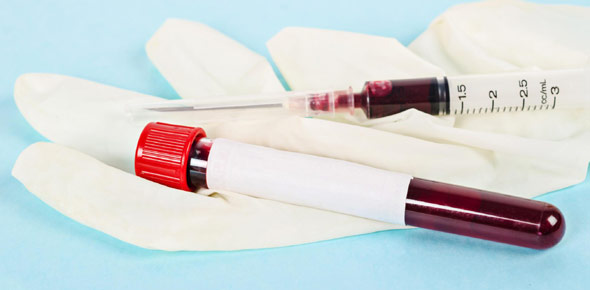Critical vitamin used by the liver to produce clotting factors is ____
Two substances that are too large to be filtered from the blood in the...
In order for a positive diagnosis of an HIV infection, two test must...
An elevation or decrease of which electrolyte can be especially...
When looking at a chest x-ray an area of the lung that is filled with...
Which of the following is considered a single gene disorder
Laboratory evaluation of hematuria begins with:
What is the term for frequency of disease in a group?
Which of the statements regarding the nitrite test is incorrect? ____
Most CLA waived hematology tests use blood from ____
Blood
Leukocytes
Choose A
Choose A
At what age should initial cholesterol and lipid screening begin
Findings suggestive of bacterial vaginosis on wet mount include:
What is the percentage of people experiencing an acute MI with a...
BNP (B natriuretic paptide’s) main benefit is its negative...
Which of the following describes the process in which fluids and...
Which of the following urine colors is abnormal? ____
Which of the following statements regarding chemical urinalysis strip...
Which crystals are commonly seen as colorless octahedron crystals that...
Which of the following is not a formed element in the blood? _____
Ketone
A 21yr old febrile woman presents with a total WBC of 15,200. ...
Patients with Pheochromocytoma exhibit a triad of symptoms to include...
Your patient’s Western Blot was positive for HIV. What further...
Which of the following is not a granulocyte? ____
Which of the following proteins may be found in small amounts in the...
In health, the absolute band count is usually below:
Anita Bruno is a 55-yr old schoolteacher with type II diabetes who...
Which of the following intial tests are most appropriate when one...
What is the normal FEV1/FVC ratio?
Which of the following is an incorrect association? ____
Determine the statement that is incorrect regarding a 24-hour urine...
After migration into tissue basophils undergo transformation into
The most common disorder of the anterior pituitary is:
If you suspect a pneumothorax, you should order which type of chest...
In which of the following conditions might you find an elevated PSA?
You have a patient with chest pain, dyspnea, and hemoptysis. You...
Deterrmine which of the urinary system functions is incorrect. ____
Which of the following substances is/are not normally found in urine?...
Determine which of the following statements about bacteria in urine is...
The above screening test for Hepatitis C is positive. This...
You have a patient who is complaining of numbness and tingling of the...
What laboratory tests do you order to confirm a diagnosis of...
The specific gravity is determined in what part of the urinalysis...
Urine that is allowed to sit for too long at room temperature will...
Which of the following statements regarding erythrocyte sedimentation...
Urobilinogen
You perform iron studies to try to discern whether your patient with...
There are four densities (fat, water, air, metal) in the human body...
A distortion commonly seen in a portable chest radiograph is:
CA 125 is an excellent screening test to use to rule out ovarian...
Your patient has a negative RPR, but a positive treponemal test...
Which of the following statements is true? ____
Determine which of the following statements best describes a waxy...
Which of the following statements about the formation of crystals in...
Which of the following crystals resemble coffin lids? ____
The first serology test to detect Hepatitis A virus infection is:
A person with a BRCA1 mutation has an increased risk of which of the...
Your patient who returned from a camping trip in the northeast a few...
Which of the following is NOT a secondary cause for hyperlipidemia?
Macrocytes may be seen on the peripheral smear of all of the following...
When ordering a chest x-ray for a patient with a cough and fever, the...
Immature red cell in bone marrow (also called rubriblast)
Variances in red blood cell (RBC) size
A blunted or obscured costophrenic angle on a chest x-ray is most...
Joey Fastdriver was in a head on collision. He reports hitting his...
Harry Grant is a 47 yr old caucasian who had a previous history of IV...
Confirmation of Hepaitis C is determined by a second test which is...
What test must be checked before spinal puncture to rule out increased...
Evaluate which of the statements regarding cells found in microscopic...
Which crystals are yellow-brown granules often found in clumps that...
Which of the following white blood cells does not match the associated...
The erythrocyte indices ____
What are the screening guidelines for lung cancer?
A serology test that is helpful in detecting Hepatitis B infections...
Which serology marker, when persistently present in the blood beyond 6...
Which of the following is often seen in liver disease?
Tumor markers are useful for everything below except:
CEA antigen is a useful test for screening for gastric carcinomas,...
Which serology test indicates immunity and confirmation of Hepatitis...
When making a wet mount slide for evaluation of your patient’s...
When calculating a microscopic urinalysis, which of the following is...
Which term does not match its description? ____
Which of the following is most consistent with the hepatic enzyme...
A patient has an FEV1 of 1.91 liters (52% of the predicted...
A definitive diagnosis fo DVT is most often made with
When evaluating chest radiographs, a generalized decrease in vascular...
...
Which of the following statements regarding Pro Time testing is false?...
The first serological marker to appear in a person with ...
Choose A
















